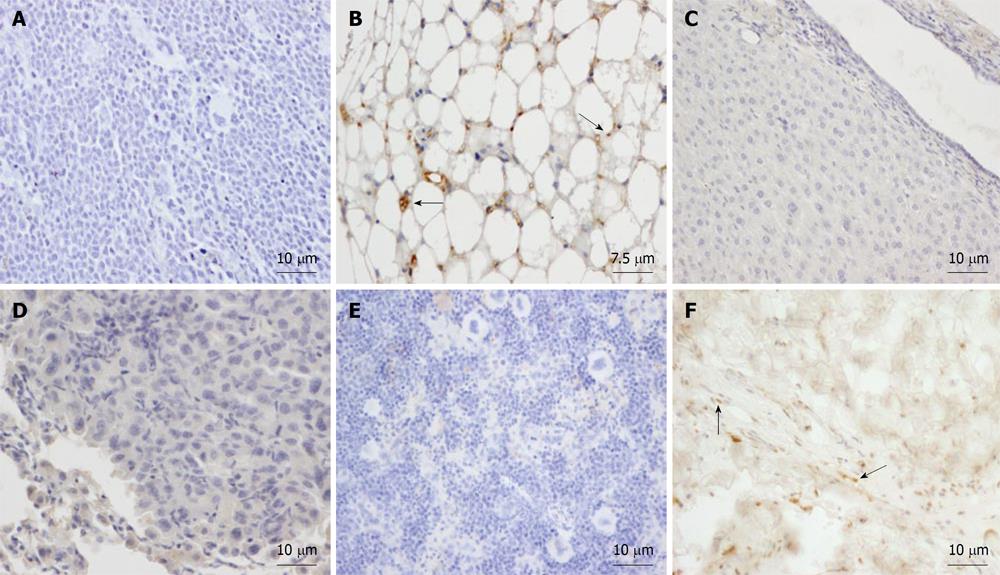Copyright
©2011 Baishideng Publishing Group Co.
World J Stem Cells. Jun 26, 2011; 3(6): 53-62
Published online Jun 26, 2011. doi: 10.4252/wjsc.v3.i6.53
Published online Jun 26, 2011. doi: 10.4252/wjsc.v3.i6.53
Figure 5 Paraffin-embedded tissue sections from NOD/SCID mice transplanted subcutaneously with human adipose-derived mesenchymal stem cells after 17 mo.
Sections were immunostained with monoclonal anti-human mitochondria antibody (A-D) or anti-human ribonucleoprotein antibody (E, F) and then were counterstained with hematoxylin. A: Saline injected SCID showing no staining for anti-human mitochondria in spleen. Negative control; B: SCID subcutaneous adipose tissue section at the site of injection at 17 mo showing staining for anti human mitochondria in the adipocytes in brown (arrows); C: Liver of a human adipose-derived mesenchymal stem cell (AMSC) SCID injected mouse at 17 mo showing no human AMSC (hAMSC); D: Lung of a human AMSC SCID injected mouse at 17 mo showing no hAMSCs; E: Spleen of a human AMSC SCID injected mouse at 17 mo showing no hAMSCs; F: SCID subcutaneous dermal tissue section at the site of injection at 17 mo showing staining for anti human ribonucleoprotein in the fibroblasts in brown (arrows).
- Citation: López-Iglesias P, Blázquez-Martínez A, Fernández-Delgado J, Regadera J, Nistal M, Miguel MPD. Short and long term fate of human AMSC subcutaneously injected in mice. World J Stem Cells 2011; 3(6): 53-62
- URL: https://www.wjgnet.com/1948-0210/full/v3/i6/53.htm
- DOI: https://dx.doi.org/10.4252/wjsc.v3.i6.53









